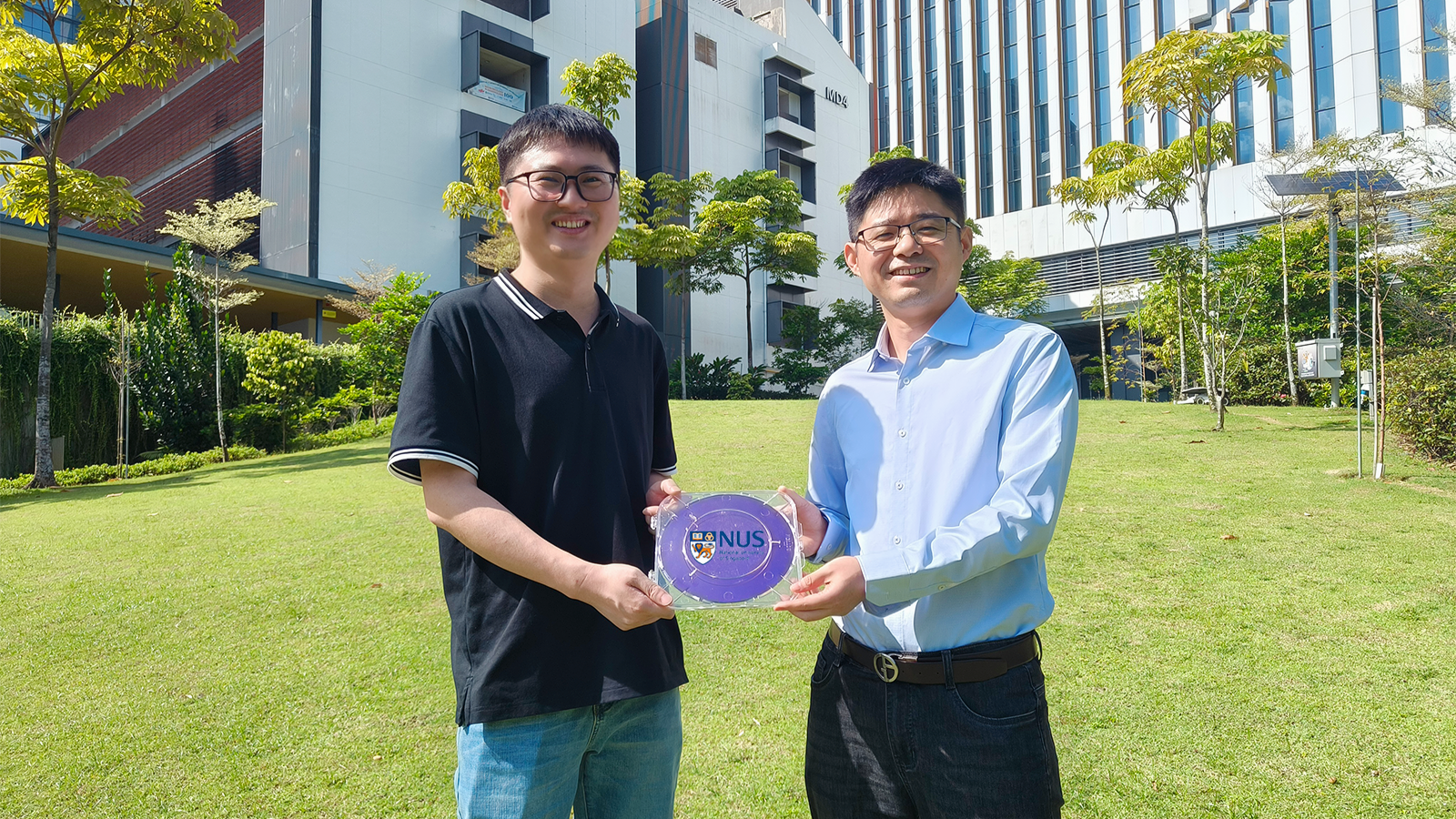A new atom-thin carbon membrane developed at the National University of Singapore could transform proton beams for cancer therapy and boost next-gen energy devices, electronics, and molecular filtration technologies.
 Assoc Prof Lu Jiong (right) and Dr Lin Huihui (left) were part of the multidisciplinary research team that developed a breakthrough carbon material, using a novel synthesis method, which has the potential to transform medical and industrial technology. Image Credit: National University of Singapore (NUS)
Assoc Prof Lu Jiong (right) and Dr Lin Huihui (left) were part of the multidisciplinary research team that developed a breakthrough carbon material, using a novel synthesis method, which has the potential to transform medical and industrial technology. Image Credit: National University of Singapore (NUS)
Just one atom thick, the ultra-clean monolayer amorphous carbon (UC-MAC) could outperform existing materials like graphene. It allows for much finer control over subatomic particles, particularly protons, which might enable safer, more precise cancer treatments using proton therapy.
Published in Nature Nanotechnology, the study describes how the membrane’s porous structure reduces proton scattering, allowing sharper, more focused beams. That’s essential for proton therapy, which targets tumors with high-energy particles while sparing healthy tissue.
A New Class of 2D Carbon
Unlike graphene's orderly honeycomb lattice, UC-MAC is made up of a complicated mixture of ultra-thin, disordered carbon rings with five, six, and seven members.
This atomic-level, "structured" disorder forms angstrom-sized pores, approximately one ten-billionth of a meter wide. UC-MAC can be tuned to filter or direct tiny particles such as protons and molecular hydrogen ions (H2+) as they pass through the material.
The result is a membrane that not only performs better than graphene or commercial carbon films, but is also much thinner and more selective. When tested by the researchers, UC-MAC cut unwanted proton scattering by nearly half compared to graphene, and by a factor of 40 compared to typical carbon films.
Obstacles and Innovations
Despite its possibilities, producing it at scale has prevented this material from widespread implementation. Producing UC-MAC is a slow, expensive process that frequently introduces metal impurities, degrading the material's performance.
To solve this, the NUS team developed a rapid new fabrication method called the “disorder-to-disorder” (DTD) approach. Using plasma-enhanced chemical vapour deposition, they created an 8-inch sheet of UC-MAC in seconds, without detectable metal contamination.
While UC-MAC's immediate promise lies in oncology, its potential applications extend much further. Its highly controlled porous structure makes it ideal for energy storage devices like batteries and fuel cells, as well as for catalysis and molecular separation.
The semiconducting properties of UC-MAC films also make them promising candidates for ultra-thin electronics, particularly for sub-2 nm integrated circuits - a critical frontier in the post-Moore’s law era.
Jiong Lu, Associate Professor, National University of Singapore
By combining atomic precision with a fast, scalable manufacturing method, the team has taken a huge step forward for the real-world adoption of a material that could accelerate technologies dramatically.
Journal Reference
Lin, H., et al. (2025). Ultraclean monolayer amorphous carbon yields a high-precision proton beam. Nature Nanotechnology. doi.org/10.1038/s41565-025-01968-3.